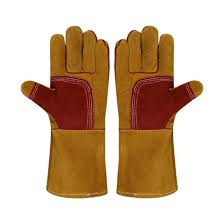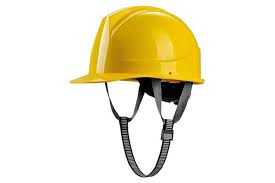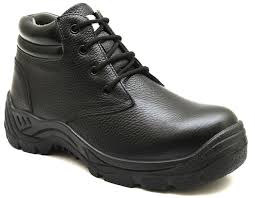Description
Welding / Leather Gloves
Overview
Built for strength and endurance, ENGINEERIC Welding and Leather Gloves provide outstanding protection against heat, sparks, and molten metal splashes. Manufactured from premium-grade split leather or cowhide, they feature reinforced stitching and a comfortable inner lining — ensuring high heat resistance and prolonged wear comfort.
Key Features
- Made from high-quality cowhide or split leather
- Heat, spark, and abrasion resistant for demanding tasks
- Cotton or flannel lining enhances comfort and insulation
- Extended cuffs for added forearm safety
- Kevlar stitching ensures exceptional durability and tear resistance
Applications
- MIG, TIG, and Arc welding
- Metal fabrication and foundry work
- Furnace, casting, and heavy mechanical operations
Website Product Description
“ENGINEERIC Welding Gloves deliver premium heat protection and durability for the toughest industrial environments. With reinforced leather construction and ergonomic comfort, they keep professionals safe and productive — even in extreme conditions.”
Additional Glove Categories (Optional Expansion)
Enhance your safety portfolio with additional ENGINEERIC glove types designed for specialized applications:
Heat-Resistant Gloves
Description:
Our Heat-Resistant Gloves are designed to provide exceptional protection when working in high-temperature environments. Made from durable, heat-insulating materials, these gloves ensure safety and comfort while handling hot materials. Ideal for use in foundries, manufacturing plants, welding operations, and food processing industries, they offer a secure grip and superior resistance to burns and heat exposure.
Key Features:
- Withstands extreme temperatures safely and effectively
- Comfortable inner lining for extended wear
- Excellent grip for handling hot tools and materials
Suitable for industrial and commercial applications
Welding gloves, also known as protective gloves or safety gloves, are an essential piece of equipment for anyone involved in the welding process. Welding gloves provide hand protection from high heat, sparks, and other hazards generated during welding operations.
Depending on the type of welding being performed, a different type of welding glove may be needed. For instance, MIG welding gloves are different from TIG welding gloves, and stick welding gloves require a different type of leather than other welding processes.
The right welding glove can make all the difference in ensuring the welder’s safety and comfort during the welding process. When purchasing welding gloves, it’s important to consider the type of welding being performed, the material of the glove, and the specific hazards of the welding application.
Welding gloves are typically made of leather and are designed to offer high durability and protection from sparks. They may also feature Velcro straps for a secure fit and added protection. Proper welding gloves can make a huge difference in the outcome of a job, and they are a must-have for anyone planning to weld.
Why is it important to choose the right welding gloves?
When it comes to welding, gloves are an important part of the process. Not only do they protect your hands from the heat and sparks that are generated during welding, but they also help to prevent burns and other injuries.
As you may already know, welding can be a dangerous activity that involves high temperatures, sparks, and sharp objects, which can cause serious injuries if proper protection is not worn. The right welding gloves can provide a barrier against heat, cuts, and abrasions, ensuring that the welder’s hands are protected from harm. Choosing the right gloves is essential for the welder’s safety and comfort during the welding process, and it can also impact the quality of the work produced.
Welders need to be able to handle tools and materials with ease, and the right gloves can provide the necessary grip and dexterity. When it comes to welding, investing in the right gloves is a crucial decision that can make a significant difference in the outcome of the job and the safety of the worker.



